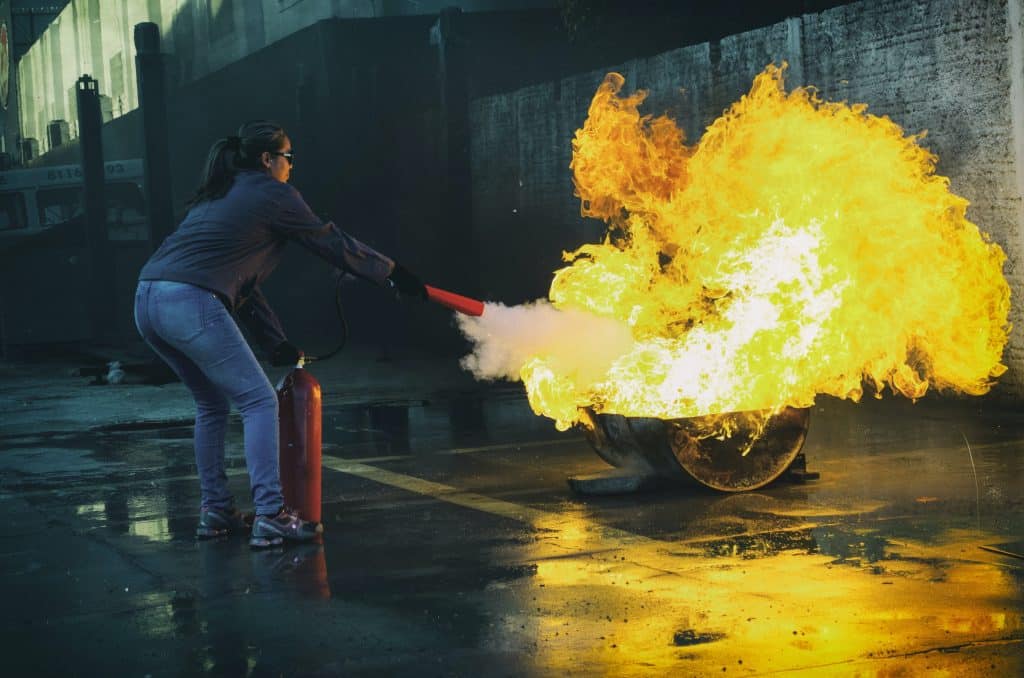Fire extinguishers are an indispensable part of fire safety, offering the first line of defence in the event of a fire in both homes and workplaces. Over the years, the technology behind fire extinguishers has evolved significantly, driven by advancements in science, changes in regulations, and a deeper understanding of different types of fires. This blog post explores the journey of fire extinguishers from their inception to the modern-day innovations that align with UK fire regulations, highlighting how these devices have become more efficient, user-friendly, and adapted to a variety of fire scenarios.
The Origins and Early Innovations
The concept of a fire extinguisher dates back to the early 19th century. The first version was patented in England in 1818 by Captain George William Manby, consisting of a copper vessel that expelled potassium carbonate using compressed air. This rudimentary device laid the groundwork for all future developments in fire extinguishing techniques.
Advancements Through the Ages
As industries grew and the complexity of fires encountered increased, the need for more effective fire extinguishing methods became apparent. This led to the development of various types of extinguishers, each designed to tackle specific classes of fires, defined in the UK as Class A (solids), Class B (liquids), Class C (gases), Class D (metals), and Class F (cooking oils and fats).
- Water Extinguishers: Once the primary solution, used for Class A fires. Innovations included the use of additives to improve effectiveness and reduce the required storage size.
- Carbon Dioxide (CO2) Extinguishers: Introduced in the mid-20th century, these are primarily used for electrical fires (Class E, though this classification is not officially used in the UK anymore) and some flammable liquids (Class B), offering a non-damaging, residue-free extinguishing method.
- Foam and Dry Powder Extinguishers: These types were developed to address multiple fire classes, including B and C. Dry powder is also effective on Class D fires, which involve combustible metals.
- Wet Chemical Extinguishers: A relatively recent addition, specifically designed for Class F fires, commonly occurring in kitchens.
Regulatory Evolution and Impact
In the UK, fire extinguisher provision and maintenance are governed by stringent regulations, including the Regulatory Reform (Fire Safety) Order 2005 (England and Wales), the Fire (Scotland) Act 2005, and corresponding regulations in Northern Ireland. These laws mandate risk assessments in workplaces, clearly defining the types and placements of extinguishers required to ensure safety.
Modern Innovations and Technologies
Today’s fire extinguishers are more sophisticated, incorporating materials and chemicals designed to tackle fires more effectively and with minimal environmental impact. Innovations include:
- Eco-Friendly Agents: New extinguishing agents that are less harmful to the environment, replacing halon gases in older models.
- Smart Extinguishers: Incorporating IoT technology, these extinguishers can alert maintenance teams when servicing is needed or when they have been deployed.
- Lightweight Materials: Advances in materials science have led to lighter, more durable canisters, making extinguishers easier to use and transport.
Looking to the Future
The future of fire extinguishing technology continues to evolve, with research focusing on non-toxic, environmentally friendly agents, and smart technologies that can automatically detect and extinguish fires. The aim is not only to make fire extinguishers more effective but also to ensure they cause minimal damage to the environment and are accessible and easy to use for everyone.
From the basic, manually operated devices of the 19th century to the sophisticated, multi-purpose extinguishers of today, the evolution of fire extinguishers reflects a continuous commitment to safety and innovation. In the UK, adherence to fire safety regulations ensures that the advancements in extinguisher technology are matched with the needs of modern homes and workplaces, making them safer places to live and work. As we look to the future, the journey of fire extinguisher development promises even greater advancements, further enhancing our ability to respond to fires effectively and safely.
For expert advice on fire protection and prevention contact Martyn Young Fireproofing Consultancy today on 07585 896648


